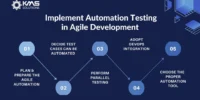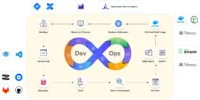Artificial Intelligence (AI) and automation have become transformative forces in the business landscape, offering unprecedented opportunities for efficiency and innovation. In this guide, we’ll delve into the AI-driven automation advantage and provide quick tips to harness its power for boosting efficiency across various domains.
1. Understand Your Workflow
Before implementing AI-driven automation, thoroughly understand your existing workflows. Identify repetitive and time-consuming tasks that can be automated. This foundational step ensures that automation aligns with your specific business needs and goals.
2. Choose the Right Automation Tools ️
Selecting the right automation tools is critical. Choose AI-powered automation solutions that align with your industry and workflow requirements. Consider factors like scalability, integration capabilities, and user-friendliness to ensure seamless adoption across your organization.
3. Data Quality Matters
AI thrives on quality data. Ensure that your data is accurate, clean, and up-to-date. Implement data quality measures and leverage AI algorithms for data cleaning and preprocessing. High-quality data enhances the accuracy and reliability of AI-driven automation processes.
4. Start Small, Scale Gradually
Begin your AI-driven automation journey with small-scale projects. Pilot programs allow you to assess the impact and performance of automation tools in real-world scenarios. Once you validate success, gradually scale up automation initiatives across departments.
5. Human-AI Collaboration
Promote collaboration between humans and AI. Design automation workflows that complement human skills. AI can handle repetitive tasks, while humans focus on complex problem-solving, creativity, and decision-making. Striking the right balance optimizes overall efficiency.
6. Continuous Monitoring and Optimization
AI models and automation processes require continuous monitoring. Implement monitoring mechanisms to track performance metrics and identify areas for improvement. Regularly optimize algorithms and workflows based on insights gained from monitoring data.
7. Integrate AI with Existing Systems
Ensure seamless integration of AI-driven automation with your existing systems and technologies. Compatibility is crucial for a smooth workflow. Choose solutions that offer robust integration capabilities or invest in developing connectors to bridge gaps.
8. User Training and Adoption
Provide comprehensive training for users who will interact with AI-driven automation tools. Foster a culture of adoption by highlighting the benefits and demonstrating how automation enhances efficiency, reduces errors, and allows teams to focus on strategic initiatives.
9. Security First Approach ️
Security is paramount in the age of AI-driven automation. Implement a security-first approach by incorporating encryption, access controls, and regular security audits. Safeguard sensitive data and ensure compliance with industry regulations.
10. Measure ROI and Business Impact
Quantify the return on investment (ROI) and business impact of AI-driven automation initiatives. Define key performance indicators (KPIs) related to efficiency, cost savings, and improved outcomes. Regularly assess and communicate the positive impact to stakeholders.
Conclusion: Unleash the Power of AI-Driven Automation
The AI-driven automation advantage is a game-changer for organizations aiming to boost efficiency and stay competitive. By following these quick tips, you can unleash the full potential of AI-driven automation across your workflows, paving the way for a more efficient and innovative future.








